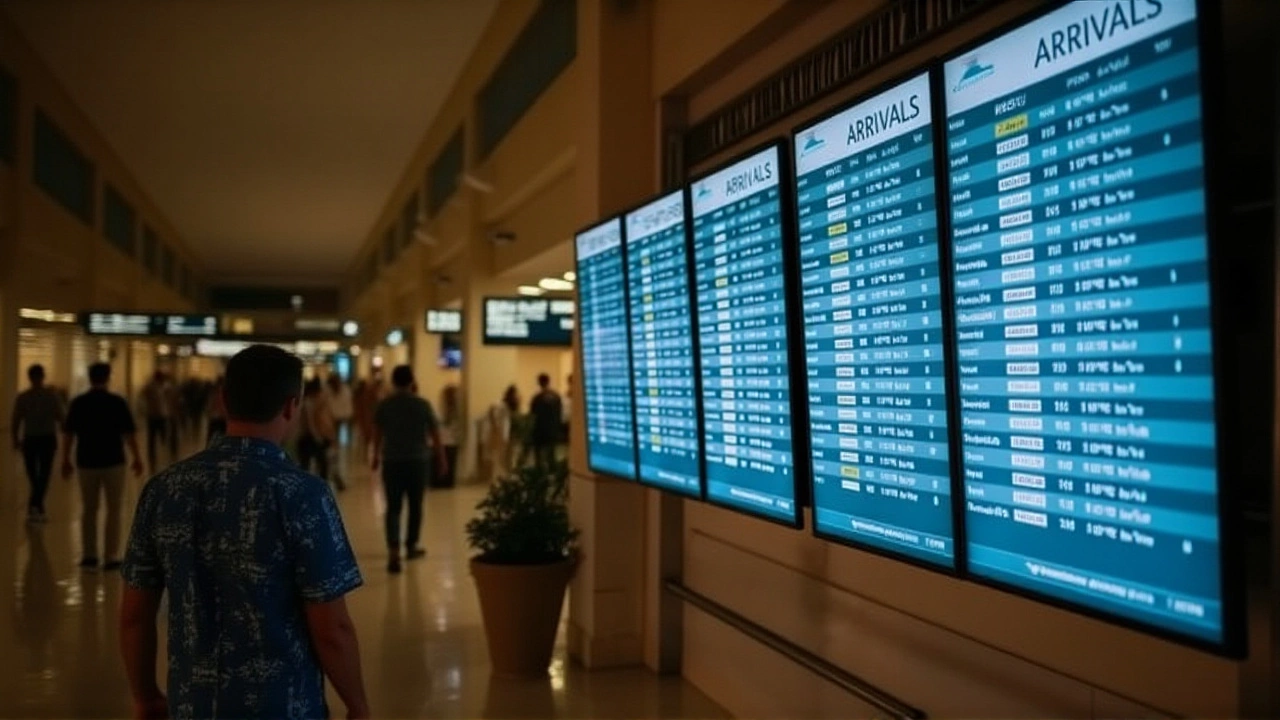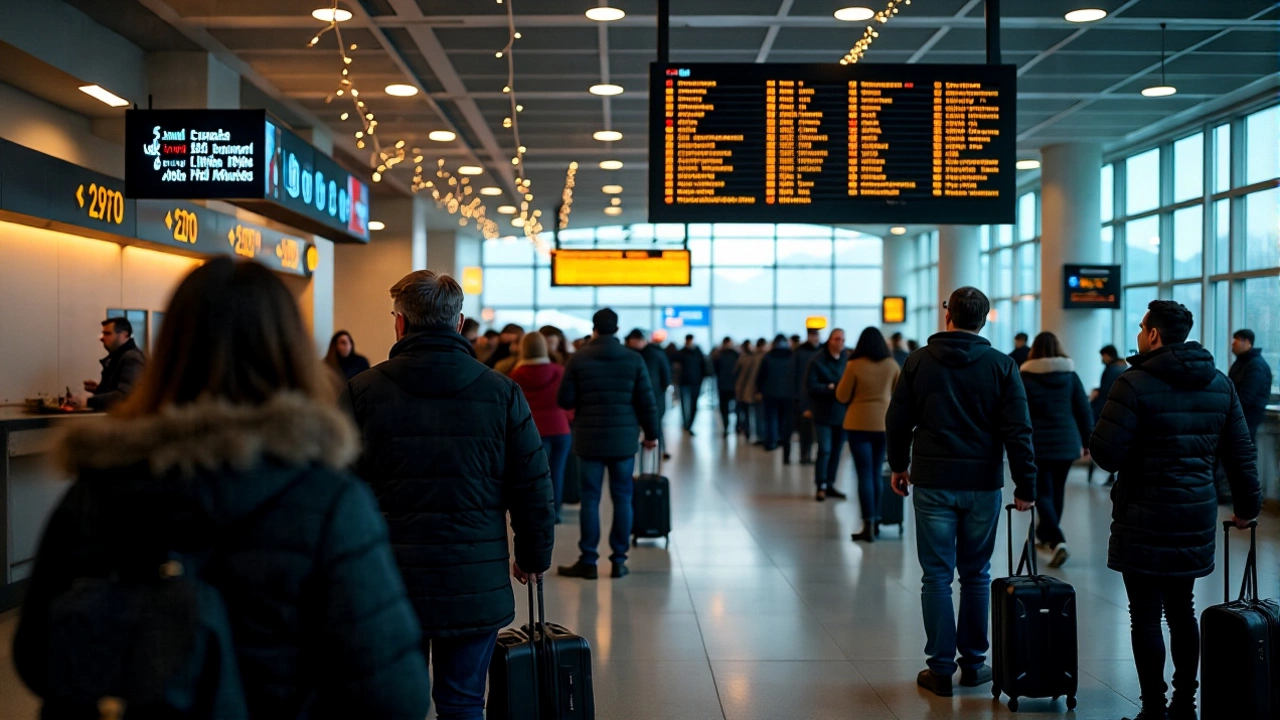At least five flights were grounded at Rajiv Gandhi International Airport in Hyderabad on Tuesday, November 26, 2025—not due to weather or mechanical failure, but because of an eruption nearly 4,000 miles away. The Directorate General of Civil Aviation (DGCA) issued an urgent advisory after the Hayli Gubbi volcano in Ethiopia’s Afar region erupted on Sunday, November 23, sending a plume of volcanic ash high into the atmosphere, where winds began carrying it eastward across the Arabian Sea toward India. The result? A ripple effect of cancellations that caught travelers off guard, reminding everyone how interconnected—and fragile—global aviation really is.
Why Ash Is More Dangerous Than Storms
Volcanic ash isn’t like regular dust. It’s made of crushed rock and glass, with particles sharp enough to sandblast windshields and small enough to slip through engine seals. When ingested by jet engines—where temperatures hit 1,500°C—the ash melts, then re-solidifies on turbine blades, choking airflow and potentially causing total engine failure. That’s not theory. It’s history. In 1982, British Airways Flight 9 lost all four engines after flying through ash from Indonesia’s Mount Galunggung. The plane glided 17 minutes before pilots managed to restart them. In 2010, Iceland’s Eyjafjallajökull shut down European airspace for days. Now, India is facing its own version.
The DGCA, headquartered in New Delhi, warned airlines to avoid altitudes between 25,000 and 40,000 feet over western India. The advisory came just hours before the first cancellations were confirmed. "It’s not about fear," said one aviation safety expert familiar with the situation. "It’s about physics. One gram of ash in a turbine can cause thousands of dollars in damage. You don’t gamble with that."
Flights Grounded, Passengers Stranded
On November 26, Air India cancelled three flights: AI 2204 from Dubai, AI 2466 to Delhi, and the Mumbai-Hyderabad round-trip AI 2444/2445. IndiGo, India’s largest low-cost carrier, pulled its flight 6E 1316 from Doha. All were precautionary. None had encountered ash directly—but the routes crossed predicted drift zones.
"We’re not flying through unknown skies," said an IndiGo spokesperson. "Safety is non-negotiable." Air India, meanwhile, began ground inspections on aircraft that had flown over the affected corridors. Passengers were rebooked, hotels arranged, and refunds offered. At Hyderabad’s terminal, travelers stood in long lines, some with overnight bags, others scrolling through flight apps with growing frustration. "I had a wedding in Mumbai tomorrow," said Priya Mehta, 34, a teacher from Hyderabad. "Now I’m just waiting. Again."

Affected Regions and Broader Risks
The ash cloud, carried by high-altitude winds from Ethiopia’s Afar Triangle—a tectonic hotspot where three plates pull apart—is expected to linger over western and northern India for days. Delhi, already struggling with seasonal smog, could see a spike in airborne particulates. While the ash won’t reach ground level in significant quantities, experts warn of potential impacts on air quality monitoring systems and even solar radiation levels.
Hyderabad’s airport, a major hub for southern India connecting to the Gulf, Europe, and Southeast Asia, is now on alert. "Operations remain normal," the airport said in a statement, "but further delays or cancellations are possible." That’s code for: expect more disruptions. Airlines are now coordinating with meteorological agencies to track ash movement in real time, something they didn’t do with this level of precision before 2010.
What’s Next? Monitoring, Not Panic
The DGCA is working with the India Meteorological Department and international aviation authorities to update forecasts every six hours. Satellite imagery from NASA and the European Space Agency is being analyzed to track the plume’s density and trajectory. If the ash cloud thickens or shifts, more airports—including Bengaluru, Ahmedabad, and even Mumbai—could see cancellations.
For now, the focus is on containment. Airlines are holding aircraft on the ground longer than usual, conducting detailed engine checks, and delaying departures until radar and sensor data confirm safe corridors. Passengers are being advised to check flight status directly with carriers—not just airport boards—since delays can be announced with less than two hours’ notice.

Why This Matters Beyond the Sky
This isn’t just about missed meetings or vacation plans. India’s aviation sector carries over 120 million passengers annually. A single day of disruptions costs the economy an estimated $20–30 million in lost productivity, tourism revenue, and logistics delays. More critically, it exposes how little preparedness exists for transcontinental natural events. Unlike earthquakes or floods, volcanic ash doesn’t respect borders. It doesn’t care about visas or flight schedules. It moves with the wind—and we’re only now learning to read its language.
The Hayli Gubbi eruption is part of a larger pattern. The Afar region has been geologically active for millions of years. This isn’t a one-off. Climate change may not cause volcanoes, but shifting wind patterns could make ash more likely to reach populated air corridors. India’s civil aviation system is catching up—but the next eruption might not give us 72 hours’ warning.
Frequently Asked Questions
How does volcanic ash affect airplane engines?
Volcanic ash contains silicate glass particles that melt at around 1,100°C—well below the 1,500°C temperatures inside jet engines. When ingested, the ash melts on hot turbine blades, then hardens into glassy deposits that block airflow, damage compressor blades, and can cause total engine failure. This is why airlines ground planes even if ash hasn’t been visually confirmed—it’s invisible until it’s too late.
Why was Hyderabad affected when the volcano is in Ethiopia?
High-altitude jet streams carried the ash plume eastward across the Arabian Sea toward western India. Hyderabad lies directly under one of these wind corridors, especially for flights coming from the Gulf. Even though the eruption was in Africa, the atmospheric conditions made India’s airspace vulnerable. Similar events affected Europe in 2010 and Australia in 2019.
Are other Indian airports at risk?
Yes. Airports in Mumbai, Delhi, Bengaluru, and Ahmedabad are all on the projected path. The DGCA is monitoring the plume’s movement hourly. Any flight route crossing 25,000–40,000 feet over western India may be rerouted or cancelled if ash density increases.
What’s being done to prevent future disruptions?
India’s DGCA is now integrating real-time satellite ash detection data from NASA and the World Meteorological Organization into its operational systems. Airlines are also training pilots to recognize ash signatures on radar and installing better engine sensors. But the biggest gap remains international coordination—volcanoes don’t notify airlines. We’re still reacting, not predicting.
Could this affect air quality in Indian cities?
Not significantly at ground level. The ash cloud remains in the upper atmosphere, between 25,000 and 40,000 feet. However, fine particulates may settle slowly over days, potentially adding to pollution levels in cities like Delhi. Air quality monitors are being calibrated to detect volcanic ash particles, which have a different chemical signature than industrial smog.
How long will flight disruptions last?
It depends on wind patterns. If the ash cloud disperses quickly, disruptions may end in 48–72 hours. But if the volcano erupts again—or if winds shift southward—cancellations could extend into next week. The DGCA says it will issue updates every six hours. Passengers should check flight status daily, not just before departure.
